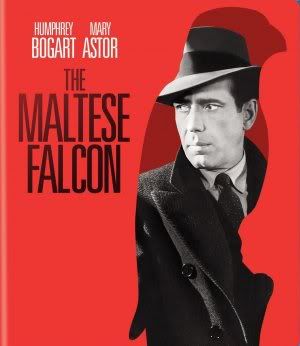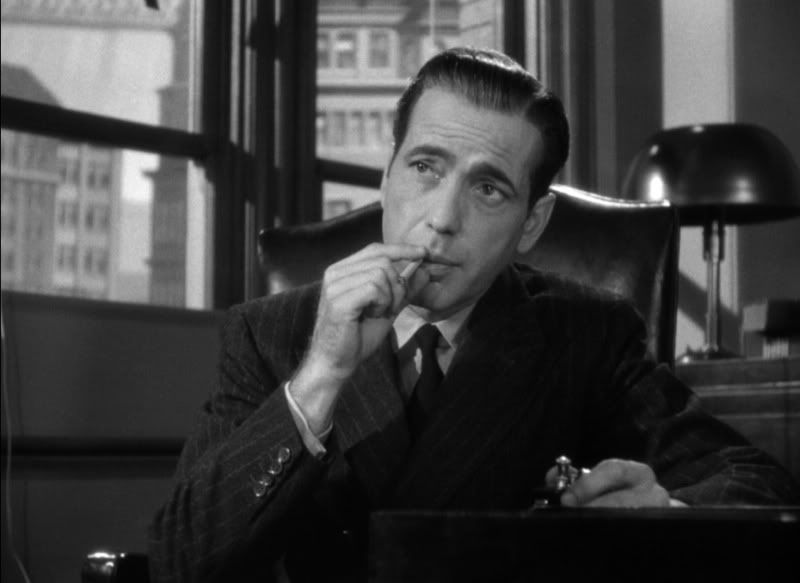 |
| Fig. 1 The Maltese Falcon poster. |
The Maltese Falcon is the pinnacle of what a film noir movie should be. Filled with as much suspense as it is stunning visuals, this film is a great example of creating atmosphere with a redressed back-lot and some choice lighting.
 |
| Fig. 2 Image from The Maltese Falcon. |
Before discussing the film, it is important to understand the genre and style in which it is filmed. Film Noir movies are crime dramas, usually with a detective as the protagonist, they are considered a genre of film on their own due to their consistent themes and visuals. Mark Bould divulges that "The term 'film noir' is said to derive from the Série noire, the title of a series of crime novels edited by Marcel Duchamel for French publisher Gallimard, starting in 1945." (Bould, 2005:15) The narratives in these novels, much like the films, are detective thrillers revolving around hard-boiled investigators. These gritty themes are captured through theatre-like sets that come alive through the use of deep shadows cast across faces and walls, the traditional black and white film creates even bolder visuals. Since the emergence of film noir as a genre there have been many interpretations of its style and themes, these are known as 'neo-noirs'. Andrew Spicer explains that 'neo-noir' is "the preferred term for film noir's made after the 'classical' period (1940-59)." (Spicer, 2002:130) These neo-noir's (basically meaning new noir films) can be very successful explorations of the genre as new technology in film and production allows for much grander potential than with the previous films, while still keeping the traditional imagery and narrative techniques. Bould expresses that "the neo-noir film is the collapsing wavefront, stitching itself into a narrative trajectory and webbing itself into an intertext. Open and closed, looking forward and back, inward and outward, it is perpetually in bardo." (Bould, 2005:107) This interprets the neo-noir films as obvious descendants of the genre, borrowing their themes and techniques to make something new but not entirely separate. Though some may view this as a negative trait, the constant borrowing or re-living of another section of films, it can also be interpreted as film-makers preventing a stunning and unusual style from being forgotten and lost.
 |
| Fig. 3 Sam Spade. |
List of Illustrations
Figure 1. The Maltese Falcon (1941) The Maltese Falcon Poster. At: http://www.movieposterdb.com/posters/10_07/1941/33870/l_33870_c34813fd.jpg (Accessed on: 27.11.11)
Figure 2. The Maltese Falcon (1941) Image from The Maltese Falcon. At: http://www.allmovia.com/c/436/436_1.jpg (Accessed on: 27.11.11)
Bibliography
Bould, Mark (2005) Film noir: from Berlin to Sin City. UK: Wallflower Press
Kiszely, Philip (2006) Hollywood through private eyes: the screen adaptation of the "hard-boiled" Private detective novel in the studio era. Switzerland: Peter Lang.
Spicer, Andrew (2002) Film noir. UK: Pearson Education Limited.


No comments:
Post a Comment